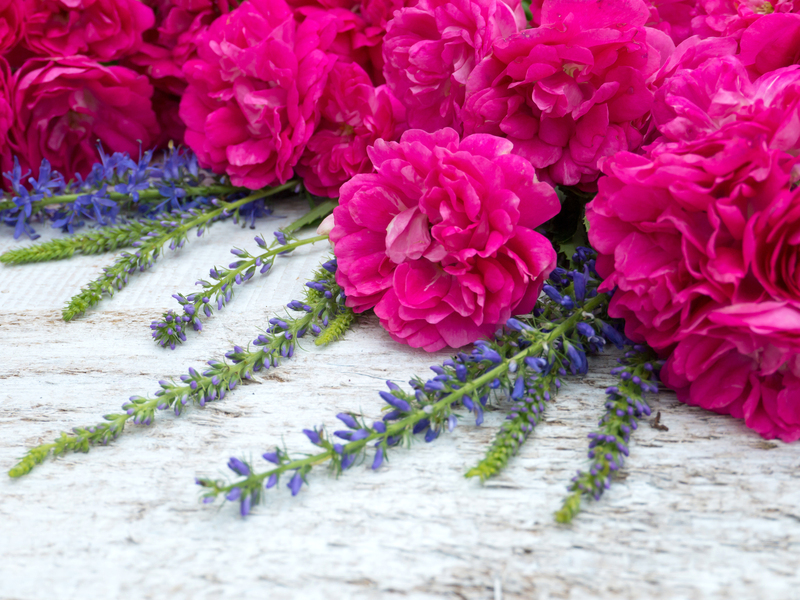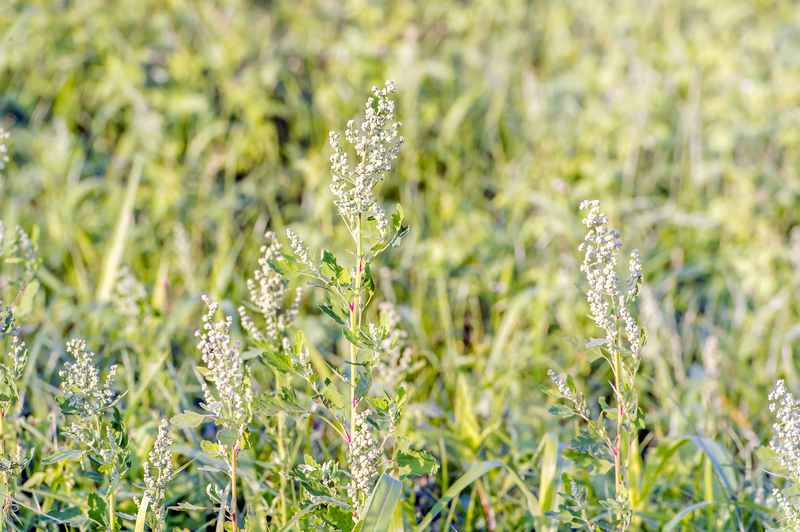Doggie Delight: Your Path to a Safe Garden
Posted on 14/08/2025
Doggie Delight: Your Path to a Safe Garden
Is your beloved canine at the center of your home life? For many pet parents, ensuring a safe and happy environment for their furry friends is paramount. Doggie Delight: Your Path to a Safe Garden explores comprehensive strategies to create a secure, joyful, and stimulating outdoor haven for your dog. From pet-friendly plants and dog-safe landscaping to preventative measures against common garden hazards, this guide walks you through every step of cultivating a dog garden paradise.

Why Dog-Friendly Gardens Matter
A garden or backyard is more than just a patch of grass--it's an adventure ground, a relaxation site, and a safe space for your dog. Your garden can be a source of physical activity, mental stimulation, and stress relief for you and your canine companion. Pet owners often underestimate the risks that come with outdoor spaces. A safe dog garden is essential to prevent accidental poisoning, escape attempts, injuries, and behavioral issues.
- Physical health: Dogs need regular exercise and fresh air to stay healthy.
- Behavioral benefits: Safe spaces reduce anxiety, destructive chewing, and digging.
- Owner peace of mind: Knowing your pet is safe allows you to relax and enjoy your own garden time.
Assessing Your Outdoor Space for Pet Safety
Before starting your transformation into a doggie delight garden, it's vital to audit your space. Assess the following aspects:
- Fencing and boundaries: Check for weak spots, gaps, and climbing opportunities.
- Poisons and toxins: Identify any hazardous plants, chemicals, or garden supplies.
- Physical hazards: Look for sharp tools, exposed nails, and dangerous debris.
- Pet access: Consider which areas you want dogs to use freely and which to keep off-limits.
Taking the time for a detailed inspection can be the first crucial step toward building a dog-safe garden.
Dog-Safe Landscaping: Laying the Groundwork
Choosing Dog-Friendly Plants
Not every plant is safe for dogs. In fact, common species such as lilies, sago palms, daffodils, azaleas, and tulips are toxic if ingested. To ensure your garden for dogs is a true haven, opt for non-toxic plants like:
- Marigolds (Tagetes)
- Sunflowers
- Snapdragons
- Camellias
- Bamboo palm (Chamaedorea seifrizii)
- Rosemary (also fragrant and culinary!)
- Fuchsias
Always cross-check potential additions to your garden with lists from credible sources like the ASPCA. Prioritize robust, low-maintenance plants that will withstand the wear and tear of playful paws.
Safe Surfaces for Dog Paws
The ground your dog runs, sits, and rolls on is vital for comfort and safety. Here are ideal choices for dog-friendly garden landscaping:
- Lawn grasses: Soft, resilient varieties like Bermuda or Kentucky Bluegrass hold up well under traffic.
- Mulch: Choose untreated wood chips or cocoa-free mulches. Avoid cocoa mulch, which is dangerous if eaten.
- Paving: Smooth flagstones and bricks offer stable footing and are easy to clean.
- Artificial grass: Pet-specific lawns are easy to maintain and dog-approved for play.
Avoid sharp gravel and stones that can injure paws or become a choking hazard. Keeping surfaces clean and free of toxic chemicals ensures a true safe haven for dogs.
Creating Shady Retreats and Shelter
Dogs are sensitive to heat and sunburn. Incorporate shaded areas with:
- Trees (non-toxic species only)
- Gazebos or pergolas
- Canopies and sun sails
- Doghouses for private retreats
Encourage your dog to relax in these cool zones, especially in warmer months, to prevent overheating.
Doggie Delight: Essential Features for a Canine Paradise
Secure, Sturdy Fencing
A vital part of any dog-safe backyard is a strong and escape-proof fence. Factors to consider are:
- Fence height: Medium and large breeds may need fences over 6 feet tall.
- No-dig barriers: Bury fencing several inches underground to prevent digging escapes.
- Gate security: Self-closing, self-locking latches prevent accidental outings.
- No climb zones: Avoid placing objects near fences that dogs could use as steps.
Frequently inspect your barrier system for signs of wear or damage to maintain a secure dog-friendly environment.
Enrichment Features for Happy, Healthy Dogs
A safe garden for your dog isn't just about avoiding danger--it's about maximizing joy and enrichment:
- Dog runs and agility zones: Install weave poles and tunnels for exercise and stimulation.
- Dig pits: Designate sand or soil areas where digging is encouraged. Bury toys or treats for interactive fun!
- Water play: Splash pads, dog pools, or gentle sprinklers help dogs cool off and stay active.
- Toy boxes: Weatherproof storage bins filled with rotating toys keep canine curiosity piqued.
With these features, your dog's outdoor experience becomes a daily delight.
Easy Access and Maintenance
- Paths and walkways: Broad, non-slip paths are ideal for dogs to follow and patrol.
- Waste management: Use pet-safe cleaning products and store waste in sealed bins far from play areas.
- Water stations: Fresh, clean water should be available at all times.
Garden Hazards: What to Avoid for Your Dog's Safety
Toxic Plants and Common Dangers
Some of the biggest threats in gardens are accidental poisonings. Watch out for these high-risk elements:
- Cocoa mulch: Contains theobromine, dangerous to dogs.
- Sago palm, oleander, foxglove, azalea, nightshade: All highly toxic.
- Compost bins: Moldy food and coffee grounds are especially hazardous. Secure compost tightly.
- Garden chemicals and fertilizers: Keep all pesticides, herbicides, and plant foods in locked storage. Choose organic or pet-safe products whenever possible.
- Sharp tools and debris: Store all tools out of reach. Sweep up broken glass, nails, or thorns promptly.
Insect and Parasite Control
Use only pet-safe insecticides and repellents. Regularly check your dog for fleas, ticks, or signs of bee and wasp stings. Natural deterrents, like diatomaceous earth or neem oil, are often safer alternatives.
Animal Visitors
Wildlife such as hedgehogs, snakes, or even neighborhood cats can either threaten or distract your pup. Block access to holes or hiding spots where animals may find shelter and regularly inspect your yard for signs of new visitors.
Training and Supervision: Your Role in a Dog-Safe Garden
Even the best-designed dog-friendly garden needs ongoing supervision, especially in the early days. Tips for success:
- Set boundaries: Train your dog to respect garden no-go zones (e.g., vegetable patches, flower beds).
- Reward positive behavior: Treats and praise help reinforce good conduct outdoors.
- Observe closely: Supervise explorative pups until you're sure your space is safe.
- Monitor health: Watch for sudden symptoms such as vomiting, drooling, or lethargy--potential signs of poisoning.
Consider using temporary fencing, deterrent sprays, or garden-safe ground covers to protect delicate areas while your dog learns the rules.
Seasonal Considerations for Dog Gardens
Summer Dangers
- Heatstroke: Provide ample shade and avoid walking on hot surfaces.
- Ticks and fleas: Increase preventive treatments during peak months.
Winter Wisdom
- Ice melt chemicals: Choose pet-friendly deicers; rinse paws after walks.
- Frozen water: Ensure water bowls stay unfrozen and accessible.
Year-Round Tips
- Routine checks: Seasonal inspections help you spot hazards before they become problems.
- Adjust enrichment: Rotate toys and games to suit weather and season.

Dog-Friendly Gardening: Sharing the Space
A garden for dogs and humans can coexist beautifully. Use plant borders, fencing, or raised beds to carve out people-only sections. Encourage joint activities like fetch, scent work, or quiet reading time together outdoors.
You may even consider a pet herb garden--grow safe herbs such as parsley, thyme, or sage, which many pups enjoy.
Conclusion: Your Garden, Your Dog's Delight
Creating a doggie delight garden isn't just about eliminating hazards--it's about enriching your dog's life and fostering stronger bonds. Take time to plan, plant thoughtfully, and adjust as your pet's needs evolve. Whether you have a sprawling lawn or urban balcony, with a bit of care, any outdoor space can become a safe garden for dogs, brimming with joy and adventure.
Remember, a safe and happy garden leads to a happy and healthy dog. Let your path to a doggie delight begin today and watch as your loyal companion enjoys every inch of the paradise you create together!
```
